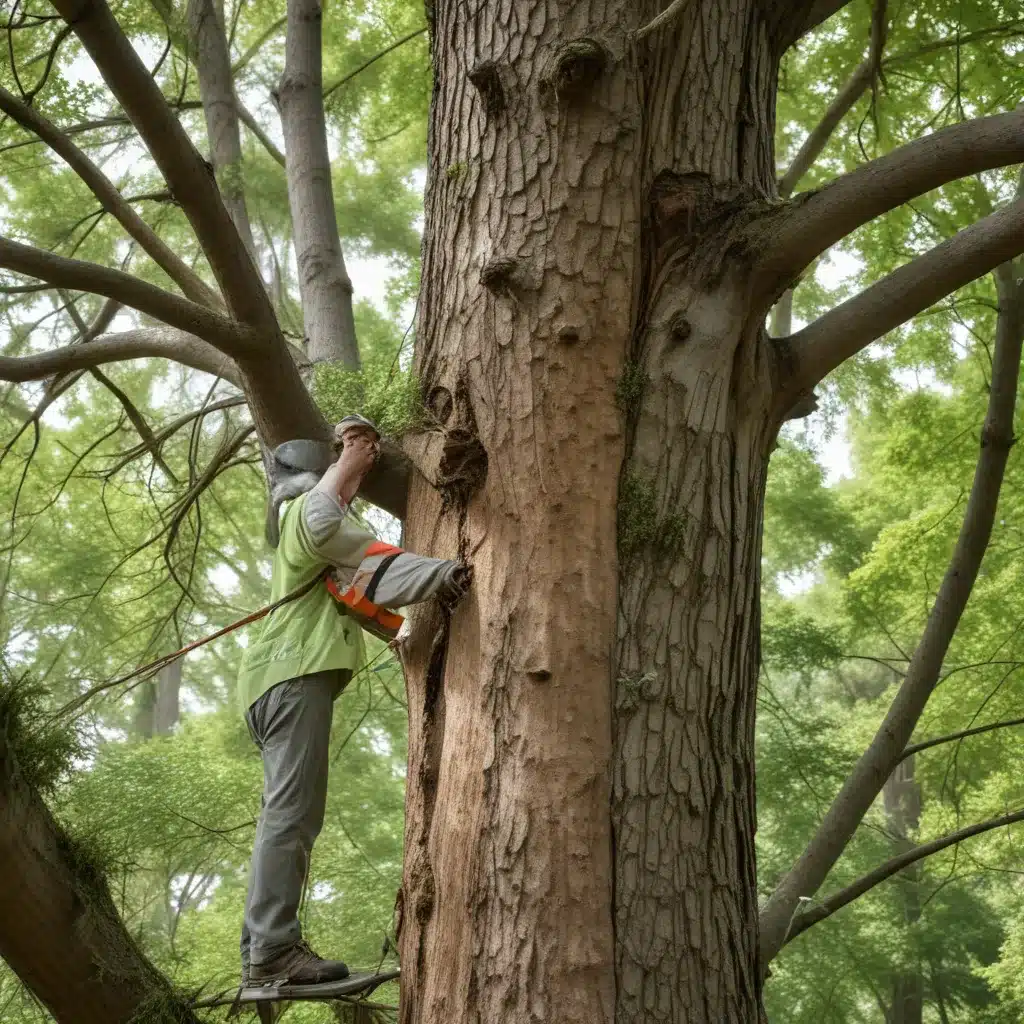
In the face of increasingly frequent and severe natural disasters, the preservation of our arboreal assets has never been more critical. Tree stabilization – the process of securing and supporting compromised trees – plays a pivotal role in safeguarding these natural giants. Understanding the nuanced techniques and strategies involved is essential for maintaining the health and longevity of trees, especially in the aftermath of catastrophic events.
Tree Structure and Health
At the core of effective tree stabilization lies a comprehensive understanding of tree anatomy and growth dynamics. The structural integrity of a tree is largely dependent on the health and development of its root system. Healthy, well-anchored roots provide the foundation for a tree’s stability, enabling it to withstand the forceful winds and heavy rains associated with natural disasters.
Conversely, compromised root systems, whether due to disease, damage, or inadequate development, can greatly elevate the risk of uprooting or structural failure. Similarly, the overall growth stage of a tree influences its resilience; younger, more flexible specimens may be better equipped to recover from storm-related trauma than their older, more rigid counterparts.
Recognizing the common diseases and pests that can weaken a tree’s structure is also crucial. Fungal infestations, insect infestations, and other pathogenic agents can compromise a tree’s vascular system, leading to a decline in structural integrity. Proactively addressing these issues through targeted treatments can enhance a tree’s ability to withstand the rigors of extreme weather events.
Emergency Tree Stabilization Techniques
In the aftermath of a natural disaster, swift and strategic intervention is often necessary to prevent further damage and ensure the long-term viability of compromised trees. Several specialized techniques have been developed to address the unique challenges posed by storm-damaged trees.
Cabling and Bracing
Cabling and bracing systems involve the installation of sturdy cables and rigid supports to redistribute the weight of damaged or weakened limbs, preventing further breakage or collapse. These interventions can be particularly effective in cases where a tree’s structural integrity has been compromised by the loss of major branches or the development of hazardous cracks or splits.
Guying and Staking
Guying and staking techniques employ the use of flexible cables, ropes, or rigid supports to anchor a tree’s trunk or major limbs to the ground, effectively stabilizing the entire structure. This approach is especially useful for younger, newly planted trees that have not yet developed a robust root system capable of withstanding high winds or soil saturation.
Soil Amendments and Aeration
In addition to structural interventions, the rehabilitation of a tree’s root zone can also play a crucial role in emergency stabilization. Soil amendments, such as the incorporation of organic matter or the alleviation of soil compaction through aeration, can help to promote the growth of healthy, anchoring roots, thereby enhancing the overall stability of the tree.
Tree Risk Assessment
Effective emergency tree stabilization begins with a thorough assessment of the risks posed by compromised specimens. This process typically involves a combination of visual tree assessment and biomechanical evaluation, which together can help to identify hazards and guide the implementation of appropriate stabilization measures.
Visual Tree Assessment
A visual tree assessment (VTA) involves a comprehensive examination of the tree’s structural characteristics, including the condition of the trunk, limbs, and root system. This evaluation can help to detect signs of decay, damage, or instability that may compromise the tree’s ability to withstand the forces of a natural disaster.
Biomechanical Evaluation
Biomechanical evaluation takes the assessment a step further, utilizing specialized tools and techniques to quantify the tree’s structural integrity. This may include the use of sonic tomography to detect internal defects or the measurement of wind-induced sway to assess the tree’s response to dynamic loading.
Hazard Mitigation Strategies
Based on the findings of the risk assessment, hazard mitigation strategies can be developed to address the specific challenges faced by each compromised tree. These strategies may include the selective removal of hazardous limbs, the implementation of cabling or bracing systems, or the execution of soil remediation techniques to enhance root health and stability.
Environmental Considerations
When implementing emergency tree stabilization measures, it is essential to consider the broader environmental context and ensure that the interventions are not only effective but also sustainable and compliant with relevant regulations.
Site Conditions and Constraints
The site conditions of the affected area, including soil characteristics, topography, and the presence of other structures or infrastructure, can significantly influence the selection and implementation of stabilization techniques. Careful consideration of these factors can help to ensure the long-term success of the interventions.
Sustainable Practices
In the interest of environmental stewardship, sustainable practices should be prioritized whenever possible. This may involve the use of eco-friendly materials, the minimization of soil disturbance, and the incorporation of native plant species to promote the overall health and resilience of the landscape.
Regulatory Compliance
Depending on the location and the nature of the emergency, various regulatory requirements may apply to the tree stabilization process. Adherence to these guidelines, which may include permits, inspections, or the involvement of local authorities, is crucial to ensuring the legality and safety of the interventions.
By understanding the nuances of tree anatomy, mastering the techniques of emergency stabilization, and considering the broader environmental context, arborists and tree care professionals can play a vital role in safeguarding our urban and rural landscapes in the face of natural disasters. Through the implementation of these strategies, the team at TriCounty Tree Care remains committed to preserving the health and longevity of our arboreal assets, ensuring the continued ecological and aesthetic benefits they provide to our communities.


